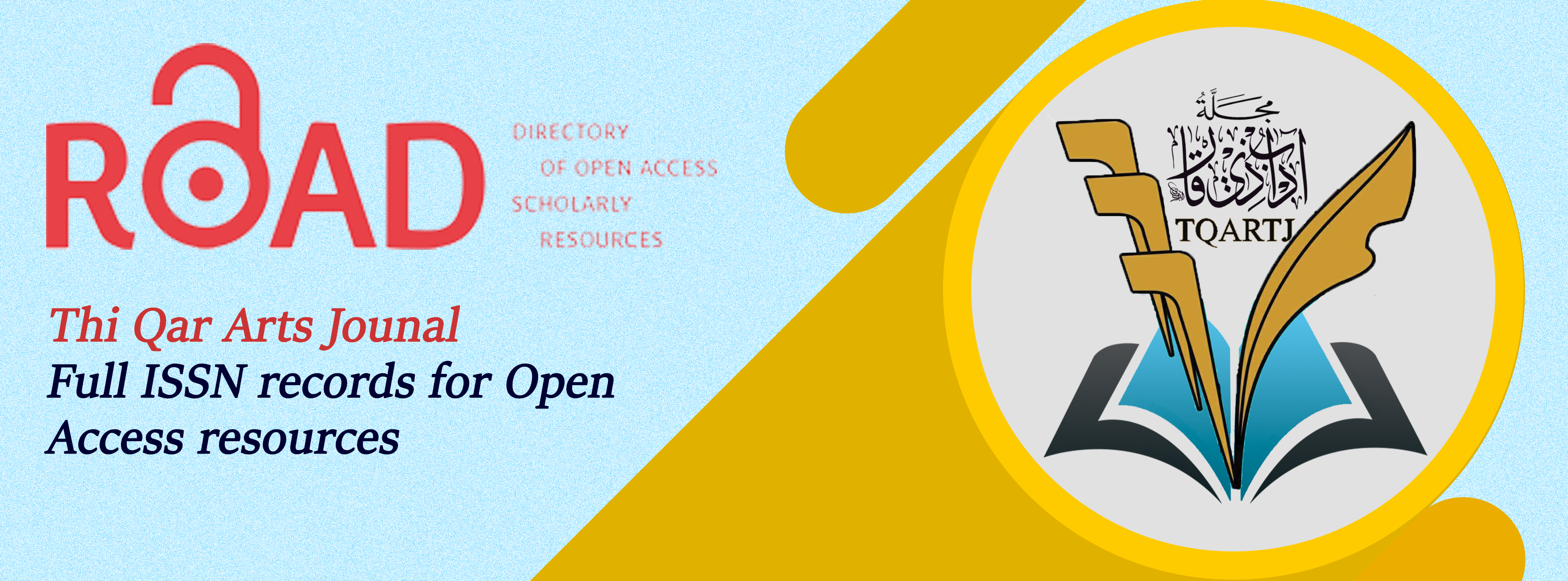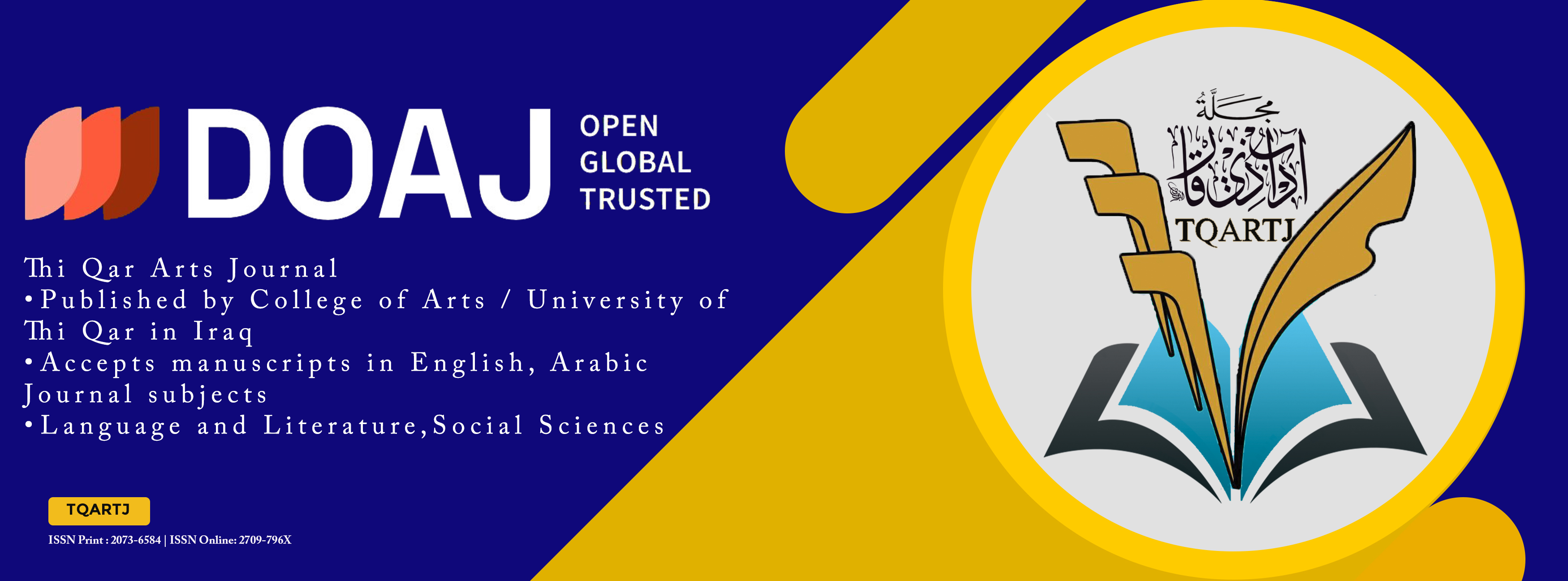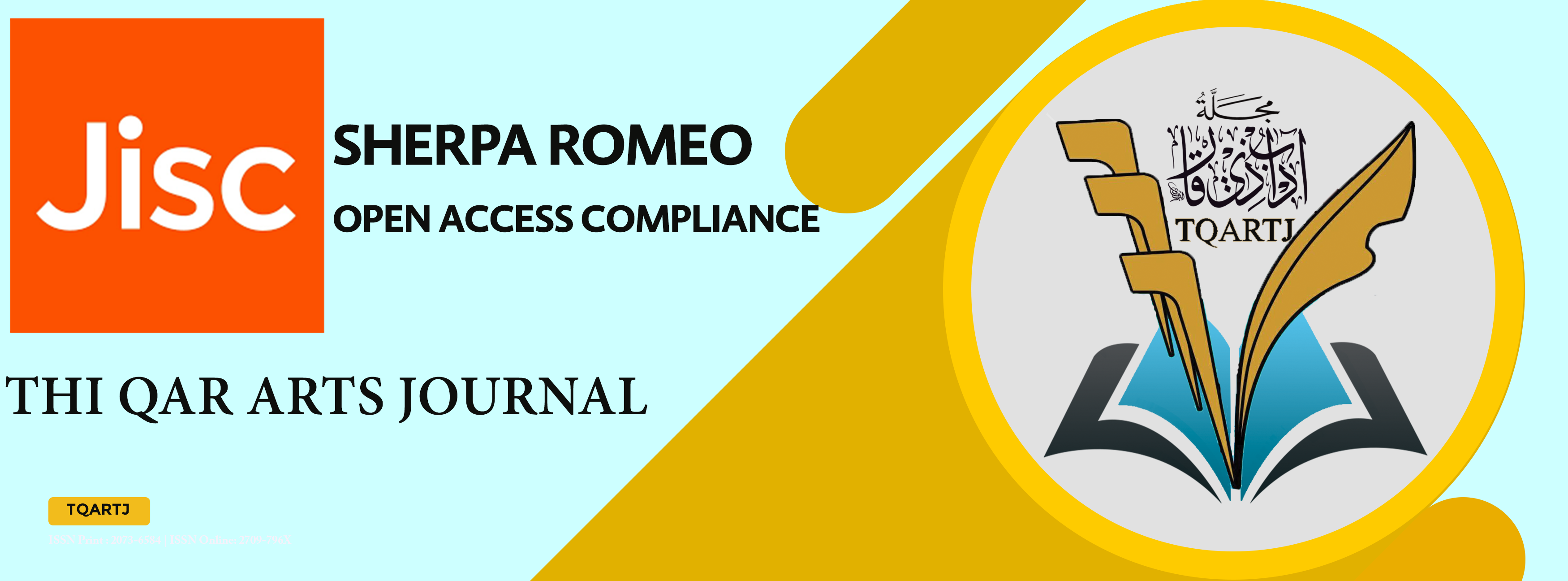Syntax of Shadows of the Unwritten Text in Postmodern Narratives.
DOI:
https://doi.org/10.32792/tqartj.v51i6.851Keywords:
Reader-Response Theory, Deconstruction, Intertextuality, The Handmaid’s Tale, Texts for Nothing, White Noise,Abstract
Using three main theoretical frameworks, this essay investigates the postmodern literature's instability of meaning and diversity of interpretation: Deconstruction, Intertextuality, and Reader-Response Theory. With an emphasis on Margaret Atwood's The Handmaid's Tale, Samuel Beckett's Texts for Nothing, and Don DeLillo's White Noise, this study explores the interaction of Reader-Response Theory, Wolfgang Iser's idea of the "implied reader," the research looks at how Beckett's Texts for Nothing emphasizes textual silences and gaps, encouraging readers to actively contribute to meaning-making, Margaret Atwood's The Handmaid's Tale is examined using Jacques Derrida's deconstructive method, which reveals meaning as essentially erratic and postponed while also upholding and undermining patriarchal and ideological discourses, last but not least, intertextual analysis, which draws inspiration from Mikhail Bakhtin, Roland Barthes, and Julia Kristeva, shows how Don DeLillo's White Noise enacts the postmodern state of textual plurality by incorporating institutional language, cultural slogans, and media fragments into its story.
By emphasizing the reader's active involvement, Reader-Response Theory shows how Beckett's minimalist prose's indeterminacy and textual gaps force readers to co-create meaning. By revealing the underlying inconsistencies in Atwood's dystopian rhetoric, deconstruction shows how language simultaneously creates and undermines power structures. By using DeLillo's narrative collage of media pieces, academic jargon, and historical allusions blurs the line between original invention and cultural quotation, as demonstrated by intertextuality.
By combining these viewpoints, the research makes the case that postmodern literature encourages readers to accept ambiguity, fragmentation, and multiplicity while resisting closure. Moreover, these ideas emphasize the postmodern decentering of the author, the rejection of fixed meaning, and the value placed on variety and interpretive openness. The concept emphasizes that postmodern literature recognizes meaning as a dynamic, interactive, and intertextual process and encourages readers to stay in uncertainty rather than seek conclusion.
Downloads
References
Atwood, M. (2017). The handmaid’s tale (Vintage Classics ed.). Vintage. (Original work published 1985)
Bakhtin, M. M. (1981). The dialogic imagination: Four essays (M. Holquist, Ed.; C. Emerson & M. Holquist, Trans.). University of Texas Press.
Barthes, R. (1977). Image, music, text (S. Heath, Trans.). Hill and Wang.
Beckett, S. (1974). Texts for nothing and other shorter prose, 1950–1976 . Grove Press.
Bewes, T. (2004). The novel as an absence: Lukács and the event of postmodern fiction. Novel: A Forum on Fiction, 37 (3), 351–373. https://www.jstor.org/stable/40267608
Blundell, S. (2009). The language of silence: Speechlessness as a response to terror and trauma in contemporary fiction (Master’s thesis, University of Canterbury). University of Canterbury Research Repository. https://ir.canterbury.ac.nz/bitstream/10092/4422/1/thesis_fulltext.pdf
Brennan, B. M. (2001). The wounds of possibility: Reading absence and silence in some contemporary Australian writing (Doctoral dissertation, University of Queensland). CORE. https://core.ac.uk/download/pdf/212687604.pdf
Culler, J. (1982). On deconstruction: Theory and criticism after structuralism . Cornell University Press.
DeLillo, D. (1985). White noise . Viking
Derrida, J. (1976). Of grammatology (G. C. Spivak, Trans.). Johns Hopkins University Press. (Original work published 1967)
Derrida, J. (1978). Writing and difference (A. Bass, Trans.). University of Chicago Press.
Derrida, J. (1982). Margins of philosophy (A. Bass, Trans.). University of Chicago Press.
Fish, S. (1980). Is there a text in this class? The authority of interpretive communities . Harvard University Press.
Fitz, E. E. (1987). A discourse of silence: The postmodernism of Clarice Lispector. Contemporary Literature, 28 (1), 29–44. https://www.jstor.org/stable/1208309
Genette, G. (1997). Palimpsests: Literature in the second degree (C. Newman & C. Doubinsky, Trans.). University of Nebraska Press.
Iser, W. (1978). The act of reading: A theory of aesthetic response . Johns Hopkins University Press.
Kristeva, J. (1980). Desire in language: A semiotic approach to literature and art (T. Gora, A. Jardine, & L. S. Roudiez, Trans.). Columbia University Press.
Miller, J. H. (1976). Theory now and then . Harvester Press.
Rabinowitz, P. J. (1998). Before reading: Narrative conventions and the politics of interpretation . Ohio State University Press.
Simões, D. (2012). Literary silences: The representation of different and non-narrated realities in narration. Op. Cit. – Journal of Anglo-American Studies, 1 (1), 141–154. https://www.academia.edu/download/42732426/Op._Cit_II_Serie_n1-2012.pdf#page=142
Yuan, Y. (1997). Representation and absence: Paradoxical structure in postmodern texts. Symposium: A Quarterly Journal in Modern Literatures, 51 (1), 45–55. https://www.tandfonline.com/doi/pdf/10.1080/00397709709599921
Published
Issue
Section
License
Copyright (c) 2025 Jameel Ibrahim Hassen

This work is licensed under a Creative Commons Attribution 4.0 International License.
The journal applies the license of CC BY (a Creative Commons Attribution International license). This license allows authors to keep ownership of the copyright of their papers. But this license permits any user to download, print out, extract, reuse, archive, and distribute the article, so long as appropriate credit is given to the authors and the source of the work. The license ensures that the article will be available as widely as possible and that the article can be included in any scientific archive.


















